Semana Santa at Lake Atitlán, Guatemala
Holy week at Lake Atitlán is a blending of Mayan and Christian Tradition.
Living in La Antigua Guatemala affords me the opportunity of being right in the heart of one of the grandest celebrations of Lent (Cuaresma) in all of Latin America—Semana Santa! Last year, I even had the good fortune of experiencing some of the Holy Week festivities on the shores of Lake Atitlán, specifically those in San Pedro La Laguna, Sololá and Santiago.
In stark contrast to the colorful and elaborate pageantry of Semana Santa in Antigua, San Pedro La Laguna is a bit more laid back but enchanting nevertheless. Here, there are numerous processions throughout Holy Week including a charming children’s procession on Good Thursday. Also known as Maundy Thursday, it commemorates the Last Supper of Jesus Christ with the apostles.
I had learned that the children’s procession would begin at 8:30 a.m. sharp, so I was up at the crack of dawn to ensure a timely arrival at Parque Central in front of the church. Dozens of women and approximately 200 children were assembling on the plaza right outside the beautifully decorated Iglesia San Pedro.
You could sense the excitement and anticipation as mothers and abuelas (grandmothers) scurried about, making last-minute adjustments to the white lacy veils worn by the little girls as a testament to their faith and devotion. In striking contrast, the women of San Pedro wore brilliantly colored, hand-woven checkerboard shawls.
Offerings of fruit and vegetables play a significant role in the ceremonies of San Pedro La Laguna and Santiago during Semana Santa. On Holy Wednesday, fruit baskets and corozo palm flowers are carried from the cofradia or brotherhood of Santa Cruz to the Church of San Pedro in a unique procession that is accompanied by prominent community members and local authorities.
Throughout town, hanging fruit adorns the gateways through which processions pass. I watched as dozens of men built these structures. Long poles of wood are meticulously covered in green leaves from a local plant and then hoisted up and tethered to their permanent position along the processional routes as pineapple, melons, kixlan kum and other colorful fruits dangle from above.
As in Antigua, beautiful alfrombras or carpets were prepared on the processional routes. Having seen hundreds of alfombras in Antigua, I appreciated the more prominent use of Mayan figures and deities as part of the unique design at the lake communities, especially in the village of Santiago. People worked diligently to create these ephemeral works of art, some made with stencils and brilliantly colored sawdust, pine needles and flower petals.
On Good Friday morning, I boarded a small public boat that would ferry me across the lake to Santiago. We floated along blissfully in the sunshine beneath three volcanoes towering in the distance: Volcán Atitlán, Volcán Tolimán and Volcán San Pedro. At the docks in Santiago, children greeted us, eager to sell us goods they had hand-crafted with pride.
Santiago Atitlán is inhabited by one of the largest indigenous communities in Guatemala, the Tz’utujil, and the celebration of Semana Santa here is probably one of the best examples of syncretism—the blending of Mayan and Christian religions—in the country. In Santiago, the people celebrate both the resurrection of Jesus as well as the rebirth of Maximón, a Mayan deity also known as the Rilaj Mam or great transformer of matter, life and soul.
The Mam is cared for and lives in the cofradia Santa Cruz. On Holy Wednesday at mid-day, the Mam is hung by his neck in his own chapel in order to come back to life again at the time of Jesus’ vengeful death on Good Friday.
I had made my way along the road that leads up from the dock to the Iglesia Santiago where the main events of Semana Santa would occur. Men and woman carrying beautiful large candles were entering the church, and a huge glass coffin decorated with flowers and twinkling lights was being prepared off to the right side.
A life-size statue of Jesus is placed on top of a cross on the floor in the center of the church and worshippers wait patiently for a turn to kneel in front of Jesus and pay their respects or confess their transgressions. At this point, clouds of copal incense filled the entire area.
After this powerful display of devotion, Jesus is then carefully placed into the glass coffin and carried through the streets of Santiago in a procession that lasts throughout the night.
“When Jesus dies on the cross, his spirit goes out into the corn fields,” said Vincent Stanzione, a historian of religion who has lived and worked among the Tz’utujil Maya for more than 20 years. “For the traditional Maya of Santiago, Semana Santa marks the change between the dry and rainy seasons while forming a flowering and fruitful petition for a bountiful harvest to come.
The traditional Maya believe that at the time of his sacrificial death, Jesus’ ancestral spirit transforms into the spirit of the milpa that gently blows in the mountain breeze.”
According to Mayan mythology, the sacrifice of Jesus will come to fruition on May 5, the day of the Santa Cruz, when Father Sun passes directly overhead and the Maize Lord Jesus stands strong in the milpa. The maize or corn plant is seen as the incarnate body of the ‘spirited soul’ of Jesus, known to the people as MaNawal, the transforming ancestor of the maize-tassel people—the Tz’utujil.
“The idea of deities sacrificing one another to be regenerated by death that renews the world is the way the traditional Maya express their mythic metaphor that life comes from death,” stated Stanzione. “Life is a plant governed by the Father Sun, which is the son of the nurturing Mother Earth of the mountain. The rituals performed here during Semana Santa are traditional Mayan ceremonies that renew the Earth on the sacred path of the sun.
Semana Santa is the time when the first rains feed the Earth just as the blood that drops from Jesus sacrificed on the cross brings the People of the Maize back to life.”
REVUE article: text and photos by Kerstin Sabene
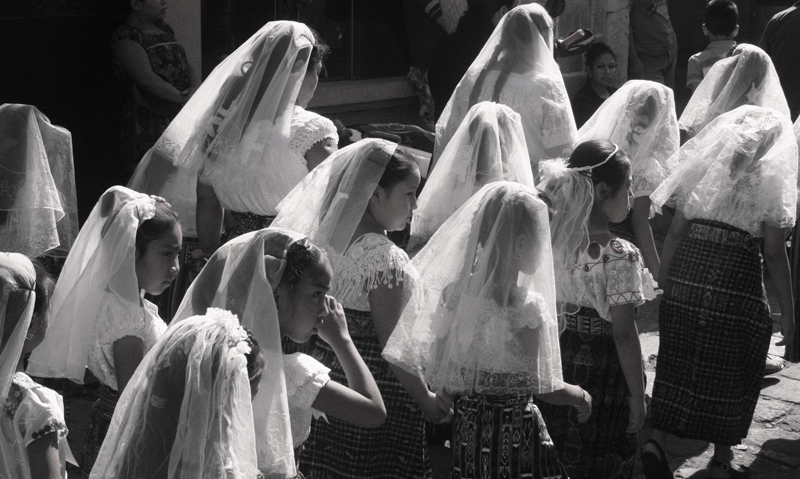
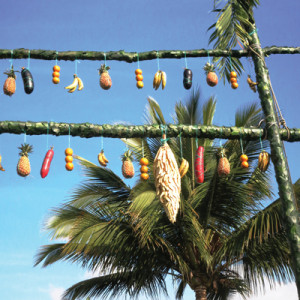
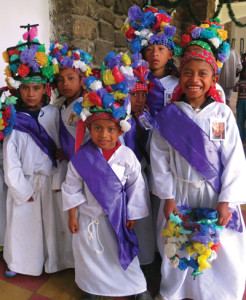
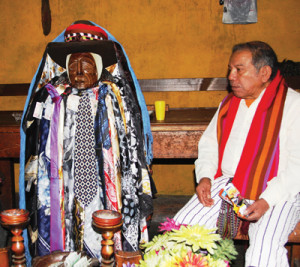
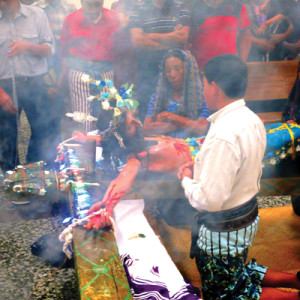
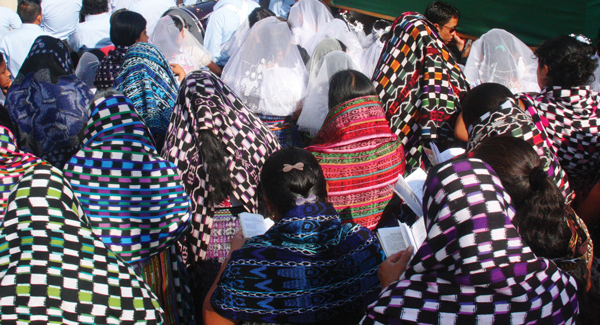
I love those celebrations. Sometimes they are so meaningful even for a tourist like myself. Maybe sometimes I will visit such a nice place. Hope to be on easter. Inspired by your post.